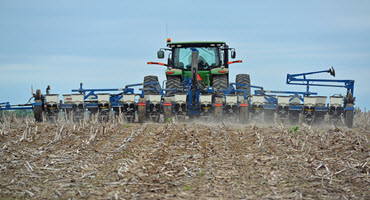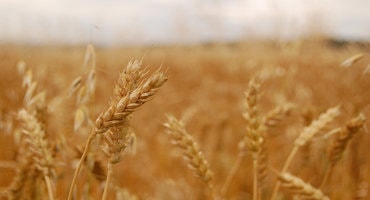U.S. corn planting is still behind 2017 rates
By Diego Flammini
Staff Writer
Farms.com
American farmers have planted almost 20 percent of the 2018 national corn crop.
Farmers have seeded 17 percent of the crop, the USDA’s May 1 Weekly Weather and Crop Bulletin says. That number is up from 5 percent last week, but still 15 percent behind corn planting at this time in 2017.
Corn planting is underway in the Corn Belt states.
Farmers in Illinois have planted 32 percent of their corn. That figure is up from 4 percent last week, the report says.
And Iowa producers have planted 17 percent of their corn crop. They had not planted any corn last week.
Farmers in the southern U.S. lead the nation in corn planting.
Texas farmers have planted 70 percent of their corn crop, the USDA says. That number is up slightly from 65 percent last week.
Farmers in the Dakotas, and Minnesota have yet to plant any corn.
Soybeans
Soybean planting remains in the early stages, the USDA says.
Only 5 percent of the 2018 soybean crop is in the ground. That number is up from 2 percent last week.

Flickr/United Soybean Board photo
Growers in Arkansas (26 percent completed), Louisiana (40 percent completed) and Mississippi (35 percent completed) continue to lead the nation in soybean planting.
Wheat
The amount of U.S. winter wheat that’s headed is still behind last year’s crop.
USDA reports 19 percent of the winter wheat crop has headed. That number is down from 41 percent last year.
In Texas, 70 percent of the winter wheat crop has headed, which is the highest percentage in the country.

The USDA ranked 30 percent of the winter wheat crop as fair, which represents a 2 percent decline from last week.
Farmers continue to seed the 2018 spring wheat crop.
Only 10 percent of the U.S. sprig wheat crop is in the ground, the USDA reports. That number is down from the 30 percent recorded at this time last year.
Producers in Idaho and Washington lead the nation in spring planting with 64 and 78 percent completed, respectively.
Suitable fieldwork days
The states with the most suitable fieldwork days for the week ending Apr. 29 were:
California and Arizona – 7
Utah – 6.9
New Mexico and Nevada – 6.6
Florida – 6.4
The states with the fewest suitable fieldwork days were:
Minnesota – 1.3
Vermont – 1.5
Tennessee – 1.9
Weekly precipitation levels
State | Precipitation (inches) | Weather Station |
Illinois | 0.13 | Springfield |
Indiana | 0.75 | Evansville |
Iowa | 0.13 | Sioux City |
Kentucky | 4.70 | Paducah |
Michigan | 0.41 | Alpena |
Missouri | 1.23 | Springfield |
New York | 1.55 | Albany |
Pennsylvania | 1.50 | Wilkes-Barre |
Tennessee | 4.08 | Memphis |
The next Weekly Weather and Crop Bulletin will be released on Tues., May 8.
Top photo: standret/iStock/Getty Images Plus